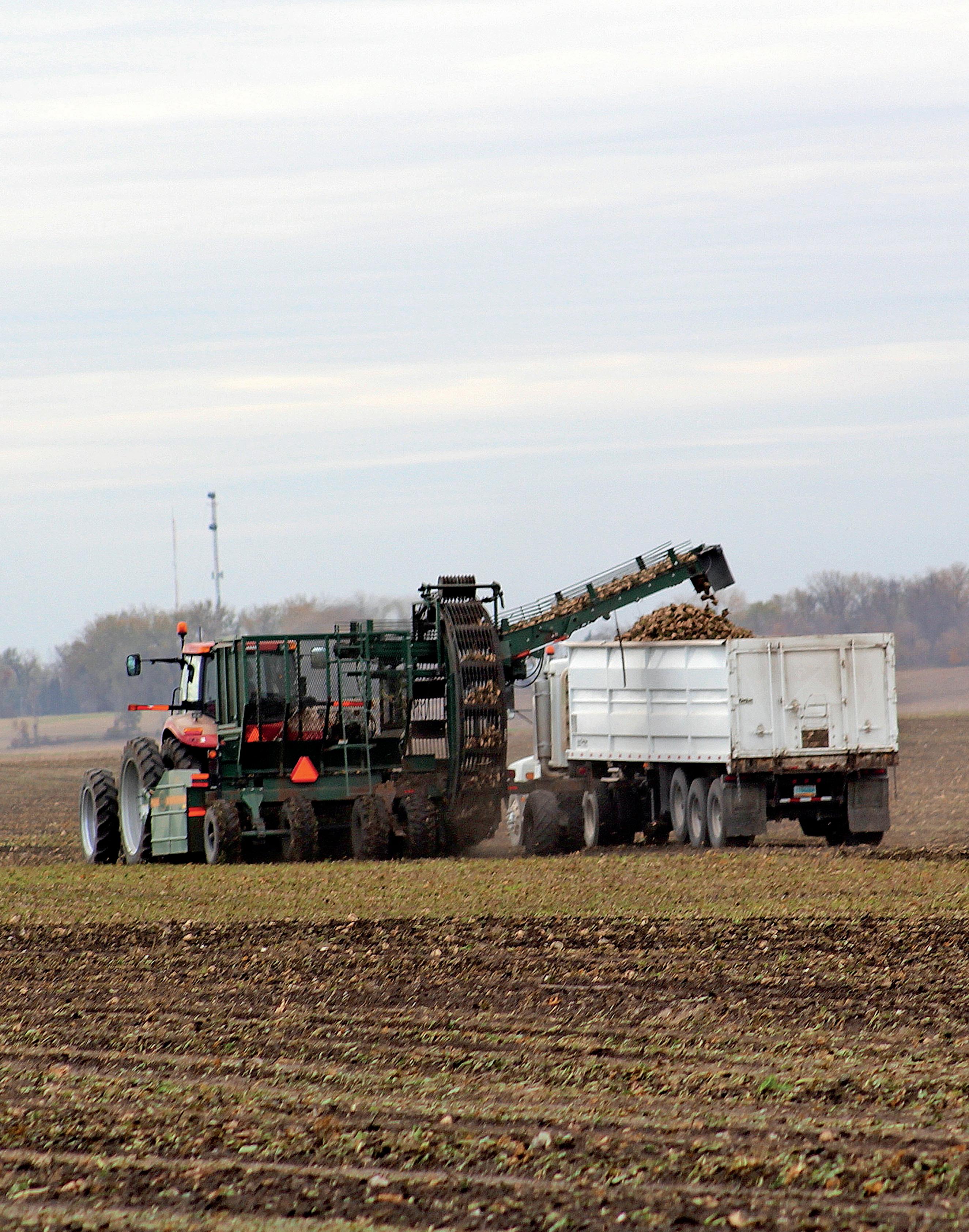
INSIDE Dietary influencers get to know the sugar industry pg. 6 NOVEMBER 2021 PRESORTED STD U.S. POSTAGE PAID Fargo, N.D. Permit No. 684 2021 HARVEST NORTH AMERICAN SUGARBEET GROWERS WRAP UP PAGE 12
Every Step of the Way







Growers spend agreat deal of time looking to the future. Whether preparing for harvest, managing for weather or setting rotations, constant improvement is the goal. Yetitisinthe rare moments when we glance back that our perspective can shift. The big picture suddenly snaps into focus—the life you’ve built and the legacy that will pass to those who come behind you.
Through all the seasons and across generations, Crystal brand beet seed has been there beside you. We’ve shared in the journey by offering solutions that push yields higher whilemanaging pests and disease. It’sapartnership that is focused on innovating and adapting for the future, even aswe occasionally pause to appreciate the present.
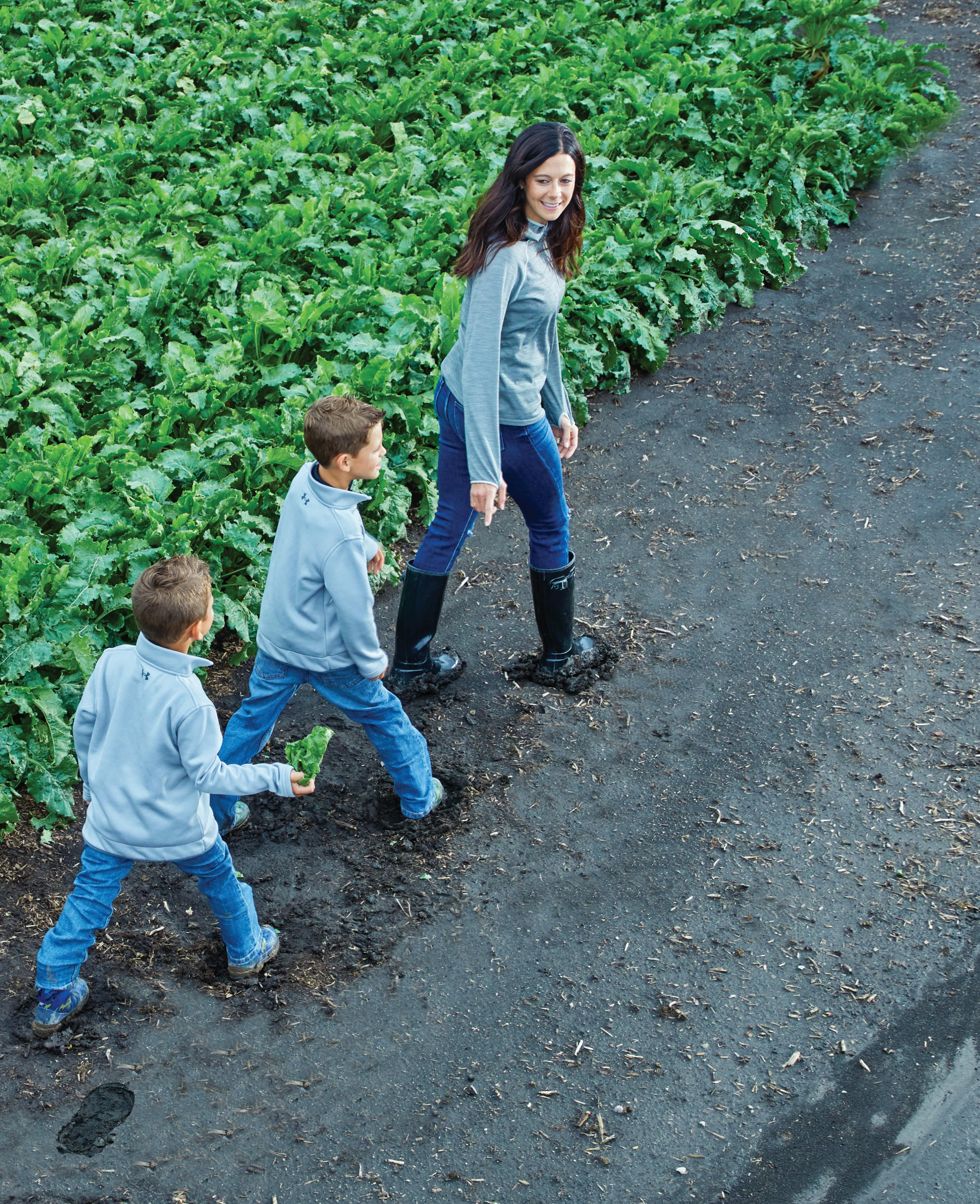


HARVEST WRAPS UP

sugar beets for American Crystal Sugar Co. harvests in a field west and north of Reynolds, North Dakota, on Oct. 26, 2021. Ann Bailey / Agweek
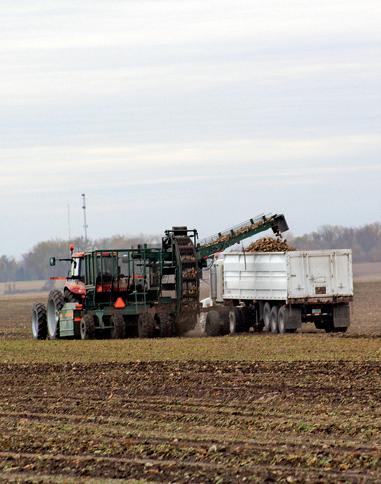
Serving The Nation’s Sugarbeet Community Since 1963 Volume 60 Number 6 November 2021 Sugar Publications | Agweek 101 5th Street N | Fargo, ND 58102 The Sugarbeet Grower is published by Agweek, a division of Forum Communications. North American sugarbeet producers receive the magazine on a complimentary basis. Annual subscription rates are $12.00 domestic and $30.00 for foreign subscribers. Advertising in The Sugarbeet Grower does not necessarily imply endorsement of a particular product or service by the publisher. VISIT US ONLINE! Agweek.com/Sugarbeet PUBLISHER KATIE PINKE 701-261-9494 KPINKE@AGWEEK.COM EDITOR JENNY SCHLECHT 701-595-0425 JSCHLECHT@AGWEEK.COM LAYOUT DESIGN SARA SLABY FCCSPECIALSECTIONS @FORUMCOMM.COM ADVERTISING ADS@AGWEEK.COM SUBSCRIBER INFORMATION MEMBERSERVICES @SUGARBEETGROWER.COM 1-800-274-5445 CONTENTS TABLE OF FEATURED INSIDE Dietary influencers get to know the sugar industry pg. PAID Fargo, N.D. 2021 HARVEST NORTH AMERICAN SUGARBEET GROWERS WRAP UP PAGE 12 6 GAINING INFLUENCE DIETARY INFLUENCERS TOUR RED RIVER VALLEY SUGARBEET FARMS AND FACTORIES
12
BY LAURA RUTHERFORD
18 SUSTAINABILITY SPOTLIGHT
ECONOMICS AND ENVIRONMENT
PLUS... 4 Dateline Washington 5 Photos from the Field 22 Write Field ON THE COVER A farmer who raises
2 NOVEMBER 2021 AGWEEK.COM/SUGARBEET FACEBOOK.COM/SUGARPUB | INSTAGRAM.COM/SUGARPUB | TWITTER.COM/SUGARPUB 3
ystalbrand is aregistered trademarkofAmerican Cr ystalSugar Companyand is used with per mission
PRODUCERS ACROSS NORTH AMERICA SEE POSITIVE RESULTS IN A DRY YEAR BY ANN BAILEY, EMILY BEAL, NOAH FISH, MIKKEL PATES AND JENNY SCHLECHT
FOR THE MARI FAMILY, SUSTAINABILITY MEANS
BY SCOTT HERNDON
Cr
Good Things Come Fr om Common Gr ound ™
DATELINE WASHINGTON
IN 2021, WASHINGTON AND AG POLICY DID NOT RETURN TO NORMAL


As we reflect on this past year, its clear that it was not the return to normal that we had hoped. Both lingering and new challenges associated with the pandemic tested our resiliency. Disruptions in global supply chains, worker shortages, cost increases and weather seemed to intensify. While we can be thankful for widespread vaccines, good crop prices and timely rains, it’s not been easy. But just like our crop, our industry is tough and resilient.
Like you all, we held our breath here in Washington as we watched the growing season unfold. The intense drought this summer had us very alarmed. Our industry proactively worked with Congress over the summer and fall to ensure if the rains did not arrive disaster assistance would be close at hand. While we were successful in securing support, we hoped the industry would not need it. We are thankful in most cases it won’t be needed but appreciate that for many this was a difficult growing season.
Washington has not yet returned to normal. The combination of COVID variants and security concerns post Jan. 6 have kept the halls of Congress virtually empty from constituents, tourists and lobbyists. Most of our work remains with Zoom and phone contacts. With each passing presidential administration, it has taken longer to get agency leaders in place. We expect a good deal of turnover due to agency career staff retirements. Staff ended up liking remote work and don’t intend to return to offices. They will take a great deal of institutional knowledge with them. This lost
knowledge is important for managing agency programs, so there will be many new people to educate.
A tremendous amount of time has been spent by Congressional leaders negotiating a two-part infrastructure bill. We, along with most other agriculture groups, have been working to protect existing tax provisions that growers rely on. It’s critical that our industry has the tools necessary to pass along farms to the next generation. Infrastructure, social spending, the debt ceiling, and funding the government will consume Congress until the end of the year.
Efforts to address climate change have only intensified over the last year. Legislative efforts either through reconciliation, the farm bill and beyond are inching closer to fully-fledged programs. We continue to position agriculture as an ally in this fight. Funding for voluntary and incentive-based programs continues to be the goal. Our hope is that farmers can gain additional revenue streams in the years to come, without overly burdensome regulation, while also reducing instances of extreme weather that impact our crop. But even today, we are fighting the Environmental Protection Agency in other spaces, including pesticide issues. These and other issues must be addressed to ensure our industry remains strong for many years to come.
As we finish the harvest, we give thanks for all the blessings we have received and for all of the people who have helped our growers produce and process an
LUTHER MARKWART
Executive
Vice President
American Sugarbeet Growers Association

Luther Markwart has been the executive vice president of the American Sugarbeet Growers Association since 1982. Luther can be reached at lmarkwart@ americansugarbeet.org.

essential ingredient of our food supply. Your grower leaders will be meeting in Washington this fall to meet with key government leaders and strategize on the challenges ahead. We encourage you to attend our annual meeting to learn more about our plan for 2022.
The 2022 ASGA Annual Meeting entitled, “Together Again to Shape Our Future,” will focus on key issues for our industry in the year ahead, especially the 2023 Farm Bill. The range of topics, speakers, program details, and registration can be found at www.americansugarbeet. org. The meeting returns to the beautiful Scottsdale, Arizona, on Sunday, Jan. 30, with a golf tournament, registration, and welcome receptions. General sessions will be held on Monday and Tuesday, Jan. 31 and Feb. 1. The meeting concludes on Tuesday afternoon following the President’s Lunch. You can also make your hotel reservation and register for the meeting on our website.
May you take time to gather with your loved ones and friends over the holidays and know that in the end, friendship and love are the greatest gifts to give and receive. Happy Thanksgiving and Merry Christmas!
PHOTOS FIELD FROM THE
Even with the hustle and bustle of harvest, Sugarbeet Grower Magazine readers took a little time to send in some of their favorite Photos from the Field. You’ll find some other reader submitted photos throughout the magazine, and if you want to see all of the photos that were submitted, they will be posted on agweek.com/sugarbeet.
If you have a photo you want to share, send it to jschlecht@agweek.com, with the subject line “Photos from the Field.” Make sure to include a brief description, including the names of anyone in the photo, where it was taken, what was happening, and the name of the photographer.

 1: Steve Helm takes advantage of some down time in harvest and does some repairs to his lifter. Helm farms near Drayton, North Dakota, and his nephew Dustin Wolf, who drives truck during harvest, submitted this photo.
2: Miles Moxness, 3, was helping his dad, Matt Moxness wait for trucks during the Minn-Dak Farmers Cooperative sugarbeet harvest campaign. Photo taken in Kent, Minnesota. Submitted by Marissa and Matt Moxness.
3: Berklee, 5, and Skotlyn, 10 months, Mathiason sit in a sugarbeet field in Thompson, North Dakota. “Berklee loves all things farming and will ride in the tractor all day long. We hope these girls will take over Mathiason Farms one day,” writes her mother, Kera Mathiason, who submitted the photo.
4: A line of harvest equipment is ready to go at Hong Farms near Buxton, North Dakota, in late September. Submitted by Chad Michael.
1: Steve Helm takes advantage of some down time in harvest and does some repairs to his lifter. Helm farms near Drayton, North Dakota, and his nephew Dustin Wolf, who drives truck during harvest, submitted this photo.
2: Miles Moxness, 3, was helping his dad, Matt Moxness wait for trucks during the Minn-Dak Farmers Cooperative sugarbeet harvest campaign. Photo taken in Kent, Minnesota. Submitted by Marissa and Matt Moxness.
3: Berklee, 5, and Skotlyn, 10 months, Mathiason sit in a sugarbeet field in Thompson, North Dakota. “Berklee loves all things farming and will ride in the tractor all day long. We hope these girls will take over Mathiason Farms one day,” writes her mother, Kera Mathiason, who submitted the photo.
4: A line of harvest equipment is ready to go at Hong Farms near Buxton, North Dakota, in late September. Submitted by Chad Michael.
2 3 4 1
4 NOVEMBER 2021 AGWEEK.COM/SUGARBEET FACEBOOK.COM/SUGARPUB | INSTAGRAM.COM/SUGARPUB | TWITTER.COM/SUGARPUB 5
WITH FARM TO TABLE INFLUENCER TOUR, SUGAR INDUSTRY WORKS TO


CONNECT CONSUMERS TO THE FARM





















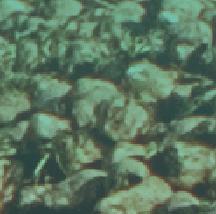


























On Sept. 28-30, 2021, the Sugar Association, together with the American Crystal Sugar Company and the Red River Valley Sugarbeet Growers Association, held their first “Farm to Table” tour for seven social media influencers from across the United States.




The main goal of the tour was to demystify where sugar comes from and humanize the sugar industry to these influential experts, according to Dr. Courtney Gaine, the president and CEO of the Sugar Association.



“We know that consumers want to know where their food comes from, yet we’ve learned through research that only a third of consumers know that sugar comes from plants,” Gaine said. “We wanted to give social media influencers in the categories of lifestyle, wellness and diet the opportunity to meet some of the passionate, hardworking farm families of the American sugarbeet industry. Bringing them to the Red River Valley was a way to tangibly show folks the real sugar story and have them experience it firsthand. The goal was that they would remember their experience and share it when they feel it’s appropriate.”
The Sugar Association is the scientific voice of the United States sugar industry. It works to support responsible scientific research and share credible research and information to increase consumer understanding and confidence of the

















































































































































role that sugar plays in a nutritious and balanced diet.








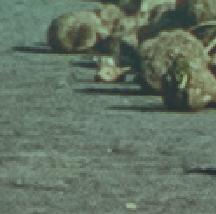
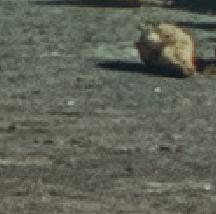





When planning the tour, the Sugar Association looked for social media influencers who are open-minded and credible, passionate about education, and have a balanced approach to diet and lifestyle.
“We had six dietitians and one chef on the tour, and only one had been to North Dakota before,” Gaine said. “We wanted to show them all of the exciting technology that goes into farming sugarbeets and have them feel emotionally invested in this industry.”

The three-day tour kicked off on Sept. 28 with an educational presentation by the Sugar Association, the American Crystal Sugar Company and the RRVSGA. On Sept. 29, the influencers visited 157
“It was 90 degree weather on the day of the tour, but I think everyone had an amazing time. I know I did,” said Gaine. “While the fields are beautiful, the tractors fun to ride and the factory impressive, it was the people on the

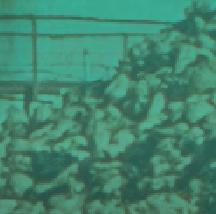







 Farms, owned by Erik Bakke and Beau Jacobsen, in Ulen, Minnesota. The tour wrapped up on Sept. 30 with a tour of the American Crystal Moorhead factory.
Farms, owned by Erik Bakke and Beau Jacobsen, in Ulen, Minnesota. The tour wrapped up on Sept. 30 with a tour of the American Crystal Moorhead factory.
CONTINUED ON PAGE 8
6 NOVEMBER 2021 AGWEEK.COM/SUGARBEET EX PE RT SI NE VE RY FI EL D FINANCING AGRICULTURE ANDRURALAMERICA We areacooperativeproviding customized financing and financial services forfarmers, ranchers and agribusinesses: Ag Co un try.c om
Loans
(MPCI, Hail, Life)
&Retirement Planning
&Tax Planning
A group of influencers visited the Red River Valley, where they learned about the sugar industry on farms and in factories. Courtesy of the Sugar Association
•Farm&Agribusiness
•Insurance
•Succession
•FarmAccounting
CONTINUED FROM PAGE 6
ground that made it so special. We are so grateful to all of the time given by so many people to ensure that our guests had an incredible experience.”
The tour was the first visit to a sugarbeet farm for social media influencer and registered dietitian Rosanne Rust of Venice, Florida.
“I’ve visited vegetable farms, an apple farm, and dairy, beef and pork productions, but the only factory experience I’d had before this was an apple storage and processing plant,” Rust said.
Rust, a registered dietitian who holds a Master of Science in nutrition degree from the University of Pittsburgh, has over 30 years of experience working in a variety of settings. She currently works as
to high school students across America so they understand what it takes to get food to the table.”

Rust’s passion is presenting science and facts to her social media followers and dispelling myths about what consumers perceive as “controversial” ingredients.
“I believe that all foods can fit into a healthy diet, and there should be no guilt or fear associated with eating,” she said.
“I’ve been known to say, ‘I have a sweet tooth but I don’t sugarcoat.’”
After participating in the tour, Rust said she enjoyed seeing the sugarbeets go from field to factory and is excited to share the total loop from farm to table with her social media followers.
“One of the most interesting things I learned is that sugar is completely extracted from the sugarbeet plant and that is all done under one factory roof, rather than at multiple locations. Seeing the whole process helps connect the dots to the ‘where does food come from’ story. I also want them to understand more about all the people — from farmers to engineers — who work to bring us food and ingredients,” she said. “I also think that the science of farming and the manufacturing part of the story is really important right now, too. Kids and young adults need to know that there are scientists and engineers in the food industry that bring food to life.”
The Power to Grow.
a nutrition communications consultant and has written textbook chapters and journal articles.

She has co-authored several diet and nutrition consumer books, and her new book, “Zero Food Waste for Dummies®,” will be published in January 2022.
“On the farm tour, my first impression was of the vastness of the sugarbeet farm. A highlight was the opportunity to ride along in the tractor. The size and specificity of the equipment and machinery for sugarbeet farming is especially impressive!” Rust said. “My son is a CNC machinist who manufactures aerospace parts, so I thought it was amazing to see how the sugarbeet lifters were designed and how all the equipment works so efficiently together. I think stories like this should be presented
Touring a sugarbeet farm was also a first for registered dietitian nutritionist Melissa Joy Dobbins from Chicago, Illinois. Dobbins, who is best known for her podcast “Sound Bites,” is also a certified diabetes educator and has served as a spokesperson for the Academy of Nutrition and Dietetics. In 2013, she was an expert witness for the United States federal government on a federal trade commission case involving false health and diet claims purported on late night infomercials.
“I’ve been on a lot of farm tours throughout the United States as well as in Canada and Europe, but I had never been to a sugarbeet farm before. It was very interesting. I know a lot about soil health and how weather impacts farming, but I had no prior sugarbeet


CONTINUED ON PAGE 10
 TOP TO BOTTOM: Rosanne Rust talks to Mindy Bakke as a group of dietary influencers experiences sugarbeet harvest in the Red River Valley.
TOP TO BOTTOM: Rosanne Rust talks to Mindy Bakke as a group of dietary influencers experiences sugarbeet harvest in the Red River Valley.
8 NOVEMBER 2021 AGWEEK.COM/SUGARBEET
Will Coleman, Melissa Joy Dobbins and Ali Swietek discuss their plan of attack for the cupcake contest. Photos courtesy of the Sugar Association
As a farmer, you see first-hand the power of growth. You watch tender plants spring to life to bring forth the fruits of your labor. At Amity Technology, we understand that bringing in that crop, is one of the most important things you do .
knowledge,” Dobbins said. “I didn’t know what they looked like before taking the tour and I was amazed that their roots grow so deep.”
Dobbins has been a dietitian for almost 30 years and a certified diabetes educator for 25 years. Her motto is “I’m the Guilt-Free RD because food shouldn’t make you feel bad!” and her mission is to promote sound science, smart nutrition and good food.
“I empower people because they shouldn’t feel guilty about the food they eat,” Dobbins said. “I help people understand food labels and make the discussion around food less fear-based. I convey positive messages based on facts, not fear, and work to teach people that they don’t need to worry about certain buzzwords when it comes to nutrition.”
Learning more about sugar production is an exciting opportunity for a diabetes educator, according to Dobbins.
“I get a lot of questions about sugar. People often think that honey is better than sugar, but the fact is that all sugar is the same — all sugars are carbohydrates. People with diabetes need to understand that,” she said. “You can eat anything you want, but you should pay attention to portion sizes and how foods affect your blood sugar levels. There are no ‘good foods’ versus ‘bad foods.’ You learn this if you have diabetes, and I wish that everyone else would learn this perspective as well. We have to take the stigma away from sugar and diabetes.”
As a dietitian, Dobbins wants people to know that it’s all about balance and balance will look different to different people.
The Sugar Association, together with the American Crystal Sugar Company and the Red River Valley Sugarbeet Growers Association, held their first “Farm to Table” tour for seven social media influencers from across the United States. In the front row, from left, are Diana Rice, Melissa Joy Dobbins, Jonathan Valdez, Rosanne Rust, Belinda Forknell, Stephanie Grasso, Meme Inge, Chrissy Jacobson, Mindy Bakke and Trygg Bakke. In the back row, from left, are Harrison Weber, Ali Swietek, Andy Fiske, Courtney Gaine, Michael Martin, Beau Jacobson, Soren Bakke, Erik Bakke and Joe Hastings. Courtesy of the Sugar Association

“There is no ‘one size fits all’ approach to nutrition,” she said. “As a dietitian, I personalize and tailor different priorities for different people. Everyone is unique.”
Helping people evaluate the source of their nutrition information and providing them with scientific facts is the goal of Dobbins’ Sound Bites podcast.
“My podcast has been out for more than six years, and I interview experts on topics ranging from fad diets to farming,” she said. “I talk with farmers and producers and get their perspectives, and put out accurate, credible information.”
Dobbins said it is critically important for farmers to tell their story to the American consumer public.
“Consumers want more information about farming and where their food is coming from. They don’t always trust industry, but they do trust farmers,” she said. “Farmers have a great story that they shouldn’t be afraid to tell. It
reaps rewards to give consumers more information. Good things happen.”
When farmers share information with consumers, it builds trust.

“On social media, I want to show consumers that they can trust that farmers know what they’re doing,” Dobbins said. “It scares me when technology gets taken away from farmers by consumers and nonfarmers. Farmers should get to make their own decisions, so the more people can know and understand about farming, the better. People don’t always understand the specifics, but they understand and appreciate the overall concepts.”
Both Rust and Dobbins said they enjoyed talking with sugarbeet farmers on the tour, learning about the cooperative system and experiencing the strong sense of community in the American sugarbeet industry.
“It’s an awesome crop and I want people to know about it,” Dobbins said.

Laura is a shareholder in American Crystal Sugar Company and a member of the Red River Valley Sugarbeet Growers Association, the World Association of Beet and Cane Growers, and the American Society of Sugarbeet Technologists. She is also on the Board of Directors of the Sugar Industry Biotechnology Council.
Laura can be reached at GoSugar.LR@gmail.com.
FROM PAGE 8
Laura Rutherford
CONTINUED
10 NOVEMBER 2021 AGWEEK.COM/SUGARBEET
NORTH AMERICAN SUGARBEET HARVEST WRAPS UP WITH
SOLID RESULTS
BY ANN BAILEY, EMILY BEAL, NOAH FISH, MIKKEL PATES AND JENNY SCHLECHT
The 2021 growing season has been hot and dry for most of the U.S.’s sugarbeet growing regions. That hasn’t stopped most of North America’s sugar companies from posting yields ranging from average to records.
According to the U.S. Department of Agriculture’s Crop Progress report published Nov. 8, sugarbeet harvest was considered 96% completed by Nov. 7, ahead of the five-year average. That statistic only includes results from the four largest sugarbeet growing states: Minnesota, North Dakota, Idaho and Michigan. But companies throughout the continent confirmed that they were wrapping up what has been, overall, a positive harvest, despite struggles.
American Crystal Sugar
As of early November, with the vast majority of the crop harvested, American Crystal Sugar’s farmers had produced 11.77 million tons of sugarbeets, said Steve Rosenau, American Crystal Sugar director of agriculture. Yields averaged 28.7 tons per acre, he said.
Several inches of rain in the late summer and fall of 2021, combined with warm temperatures encouraged root growth. Temperatures were so unseasonably warm that the onset of this year’s harvest, which was scheduled to begin Oct. 1, was delayed by about 10 days.
That was just one of the challenges growers faced in the 2021 growing season. In the spring, dry conditions caused poor germination in some fields. American Crystal sugar initiated a voluntary program in which farmers could plant additional acres if they chose to do so, pushing acreage to 410,000, Rosenau said.

Wind and dry conditions also created production problems. However, in summer and

early fall, several inches of much-needed rain fell in the Red River Valley. Tonnage grew by about 2.7 per acre.
“It went from being a less than average crop to about an average crop,” Rosenau said.
Sugar content, in general, is lower in the southern Red River Valley and higher in the north, but on average is about 17.9%, Rosenau said.
Minn-Dak Farmers Cooperative
As of early November, with about 95% of the Wahpeton, North Dakota-based cooperative’s sugarbeets dug, the average yield was slightly less than 30 tons per acre, said Mike Metzger, MinnDak Farmers Co-Op vice president of agriculture.
The 500 farmers who grow sugarbeets for Minn-Dak Farmers Cooperative planted about 105,000 acres. Metzger’s expectations changed throughout the season, as confidence from early planting gave way to reduced estimates in dry conditions. Late rains made a difference.
“This crop put on over one-third of its root mass during early harvest,” Metzger said on Nov. 3. “We’ve never seen that.”
The crop also had sugar content of 17.9%, which is an excellent amount, he said.
The Minn-Dak Farmers Cooperative board voted in late October to have farmers set aside 7% of their acreage with the understanding that percentage could change. It remained in place as of Nov. 3.
Warm temperatures delayed the start of the stockpile harvest, and freezing nighttime temperatures in early November raised concerns about frost damage on a small percentage of beets.
Southern Minnesota Beet Sugar Cooperative
Farmers who grow sugarbeets for Southern Minnesota Beet Sugar Cooperative in 2021 harvested the highest tonnage per acre in the company’s 47-year history.

CONTINUED ON PAGE 14
Jeff Bieber of Fairview, Montana, submitted this photo of the last day of sugarbeet harvest in 2021.
12 NOVEMBER 2021 AGWEEK.COM/SUGARBEET FACEBOOK.COM/SUGARPUB | INSTAGRAM.COM/SUGARPUB | TWITTER.COM/SUGARPUB 13
Sugarbeet piles at the American Crystal Sugar Co. station near Reynolds, North Dakota, were growing larger on Oct. 26, as farmers delivered their crop throughout the day. Ann Bailey / Agweek
“We are going to harvest around 36.5 tons per acre. That’s a record by 6 tons,” said Todd Geselius, Southern Minnesota Beet Sugar Co-Op vice president of agriculture.
About 95% of the company’s sugarbeets were harvested as of Nov. 3, and total production was estimated to be slightly less than 3.6 million tons, he said.

Farmers who grow sugarbeets for the company planted 121,385 acres of sugarbeets in 2021, but will have to leave about 20% of those in the field, Geselius said.
Though conditions were dry early, rains started falling in late summer, and the crop turned around. The amount of growth during that two-month period was unprecedented.

While the warm temperatures delayed the start of the company’s stockpile harvest, the warm weather in early October, and the month before that, resulted in the sugarbeets putting on additional tonnage.

Amalgamated Sugar
Amalgamated Sugar expected yield to be just shy of 40 tons per acre as of Nov. 5, 2021, with less than 6,000 acres remaining to be harvested, according to Brodie Griffin, Amalgamated Sugar’s director of agriculture.


More than 50% of the remaining acres were in Treasure Valley. Griffin explained that southern Idaho and eastern Oregon had received several inches of rain in the preceding month. But even with the difficulties, Amalgamated Sugar expected to wrap up harvest operations in the second week of November.
“The wet October weather has created muddy conditions for our Growers and they have been stalwart to get the crop out promptly,” Griffin said. “Luckily, we have not received extreme cold weather during harvest
CONTINUED ON PAGE 16
The Disease Disruptor
WhereEconomics Meet
Solution forCercospora










More Where It Matters
These days who doesn’t want more? More bang for your buck. More time for what matters most. Seedex Sugarbeet Seed provides the top genetics with time-tested traits to help you get more out of your fields. It’s our way of helping make things just a little more sweet. seedexseed.com | #hellosugar


CONTINUED FROM PAGE13
14 NOVEMBER 2021 AGWEEK.COM/SUGARBEET FACEBOOK.COM/SUGARPUB | INSTAGRAM.COM/SUGARPUB | TWITTER.COM/SUGARPUB 15 1.888.273.3088 |BioSafeSystems.com
Sustainability
5.0tank mixes with severalchemistries, and compatibilitycharts areavailable.
OxiDate®
Leaf Spotand PowderyMildew
disease spread
conventional
to
Bolstering resistancemanagement Non-selectivecontact activity Destroystolerantand resistantorganisms Clean chemistry =clean crops No harmful residues Kurt Schwartau 970-396-8825 CO, KS, MT, NE, OK, UT, WY Jessica Jacobsen 320-212-3905 IA, MN, ND, SD Corey Mulhair 574-328-0930 IL, IN, MI, OH, WI
Eradicating bacterial and fungal pathogens on contact Immediately stops pathogen growth Stops
Allows
products
shine
which would have complicated harvest operations even further.”
Sugar content was at 18.18%, and Griffin called the 2021 results “another great crop.”
Michigan Sugar
Harvest of Michigan Sugar’s more than 160,000 acres in Michigan and Ontario was projected to wrap up around Thanksgiving, later than the typical ending point of Nov. 10 due to adverse weather conditions. As of Nov. 7, sugarbeet harvest in Michigan was 80% complete, according to the USDA’s Crop Progress report.
The season started out difficult, with around 35,000 acres having to be replanted due to frost. However, the region received consistent rainfall and no more curveballs. And though harvest has been slower than normal, the overall yield has been nothing short of solid.
“We got a record crop. North of 36 tons per acre,” said Jim Ruhlman, executive vice president of Michigan Sugar.
Michigan Sugar was projected to collect 5.4 million tons. The company is not as thrilled about the sugar content as about the yield, which has been about 16-17%, compared to a preferred 18%.
Michigan Sugar will be setting aside 5% of beets this harvest season.

“It’s the first time in recent history that we have done that,” Ruhlman said.
Sidney Sugars
Harvest was 94% complete as of Oct. 27, 2021, for Sidney Sugars, a wholly-owned subsidiary of American Crystal Sugar, with an expectation for completion by the end of October.
The Sidney, Montana, company’s slice campaign is expected to run through Feb. 5, 2022, and the processing campaign through Feb. 10, 2022, said general manager David Garland.
Yields on the 105 growers’ 31,000 acres averaged about 27.8 to 28 tons per acre, which is short of the 30-ton expectation. Sugar content is a respectable 18.4%.
Record-high days of 100-plus-degree temperatures took its toll, both in yield potential and reduced effectiveness of herbicides. Some producers may regret shutting off irrigation at the end of the season, thinking they would get typical 2-inch rains in late September. In hindsight, when those rains didn’t materialize, they probably lost some yield, said Duane Peters, Sidney Sugars’ agricultural manager.
Southern growing areas for the company received about 4 inches of rain in storms from Oct. 10 to 12, which probably added up to 1.5 tons per acre in yield. Drier northern areas had higher sugars, up to 20%.
Western Sugar
Western Sugar in early November wrapped up harvesting an average crop with good quality.
Western Sugar produces sugarbeets in Colorado, Nebraska, Montana, and Wyoming. The northern region, in Montana and northern Wyoming, wrapped up harvest in the first week of November, said Randall Jobman, vice president of agriculture for the northern region. Colorado growers also were done in the first week of the month, while Nebraska growers were expected to finish harvest by Nov. 9, said Jerry Darnell, vice president of agriculture for the southern region.
After some heat shutdowns to start harvest, the beets came in “relatively cool,” and there were no precipitation delays to slow things down.
Yield was 31 tons per acre, with sugar at 19%. Avison said the crop benefited from long days in September without a killing frost, which kept them accumulating sugar.
Spreckels Sugar
Growers dealt with hot, dry conditions throughout the region, but irrigation water was sufficient for the needs of the crop, Darnell and Jobman said.
The last several years have had harvest challenges, Jobman said, but this year had the best weather in years. Darnell said there were no frozen beets to contend with this season.
In Colorado, yields were about 33.5 tons per acre and 17.54% sugar. In Nebraska, yields were 31.5 tons per acre and 17.76% sugar. In Montana, yields were 31.5 tons and 18.2% sugar. In Wyoming, yields were about 26.2 tons per acre and 18.5% sugar.
Darnell said the company hopes to wrap up processing in March.
Rogers
Rogers Sugar usually finishes harvest at the end of October or beginning of November, so the Alberta-based company’s Oct. 22, 2021, finish was one to remember.

“It was one of the best harvests in my 31 years here,” said Bryan Avison, agricultural superintendent for the company.
Like the northern tier states of the U.S., Alberta had a hot, dry summer. But Rogers’ growers are 100% under irrigation.
“The beet crop fared good,” Avison said. “They like heat and sunshine and water, so it worked out good.”
Growers for Spreckels Sugar Company, a wholly-owned subsidiary of Southern Minnesota Beet Sugar Cooperative, plant in the fall and harvest in the spring and summer.


Shelby Drye, agriculture manager for the company, said planting began around Sept. 8, 2021, for the crop to be harvested in 2022. Planting proceeded with few problems, though some growers will have some replants, mostly due to salt in fields, he said.

Spreckels Sugar in August wrapped up harvest on the 2020-21 crop. The crop was planted on 24,024 acres. Of that, 2,316 had to be replanted due to a seed variety not performing well.
Despite the replants, the crop came out well, with 46.61 tons per acre, 16.93% sugar content and 88.59% purity. Drye said 648 acres had to be abandoned due to high temperatures in the spring rotting beets in the fields.
Because of irrigation, the pervasive drought on the West Coast hasn’t been overly burdensome for growers, Drye said. However, there are concerns about future water shortages.
Wyoming Sugar
Wyoming Sugar expected to wrap up harvest on Nov. 8, a date delayed by late season rains.
Kadan Huber, agriculturalist for the company with grower-owners in Washakie, Big Horn and Fremont
counties in Wyoming, said weather turned wet heading into harvest, and the bentonite in the soil “slicks up and causes problems really quick,” he said.
But a string of good weather at the end of October and early November meant growers were nearly wrapped up by Nov. 5. The company had estimated yield at about 31 tons per acre, but Huber figured that number would end up being about 32. Sugar content was just over 19%.
Planting on the company’s 11,980 acres began on Easter, and despite cold temperatures, only two fields had to be replanted. After what was initially a cold spring, the weather turned abnormally hot, and the region also had to contend with smoke from wildfires.
The company’s acres are 100% under irrigation. Despite concerns for Fremont County growers that water could be limited, all needs were met, Huber said.
CONTINUED FROM PAGE 14
16 NOVEMBER 2021 AGWEEK.COM/SUGARBEET
Dustin Wolf submitted this photo of “harvesting a healthy crop of beets on a clear sunny day” near Drayton, North Dakota.
SUSTAINABILITY SPOTLIGHT




SCOTT HERNDON

Vice President
General Counsel of the American Sugarbeet Growers Association








Scott Herndon serves as the Vice President and General Counsel of the American Sugarbeet Growers Association (ASGA) in Washington, DC. He represents growers on all issues that impact the sugar industry, including sustainability. On sustainability policy, he works with Farmers for a Sustainable Future, www. sustainablefarming.us, a coalition of twentyone farm and ranch groups committed to environmental and economic sustainability. Scott can be reached at sherndon@ americansugarbeet.org.
This edition of the Sustainability Spotlight features Bob Mari. Mari has been growing crops for 30 years since moving back to the farm and farming with his brother Rod. They grow sugarbeets for the Western Sugar Cooperative. They also grow corn, wheat and alfalfa. Their farm is almost entirely center pivot irrigated, with a small amount of flood irrigation, and a small amount of dryland farming.


Q: What does sustainability mean to you? How have you seen that definition change over time?
A: Sustainability for me has to be first and foremost attained on my balance sheet. That being said, that was the very reason we changed from conventional farming to strip-till farming out here in northeastern Colorado. We were not showing much of a profit in the lean years. We needed to change things up. That decision was based on the balance sheet being sustainable; that was in 2005. Little did we know that those changes that we made would propel us forward so quickly. That’s when we started to see so many other positive aspects in our farming operations.
The residue we now keep on top of the soil was and continues to be huge. It buffers the wind, keeps the soil cooler and reduces erosion (also helps retain water). We don’t see much runoff at all when it does rain so it is good for soil health and maintaining topsoil. We had 13 inches of rain this spring during the planting season with minimal runoff. That to me is sustainable modern-day farming, when the land is benefiting as
much or more as my balance sheet. That is a win-win for me, and it should be what environmentalists would hope for.


Sustainability has become a buzzword in agriculture in the last few years. I believe many people are tying it to the environment, but as I said we have to be economically sustainable if we want to continue to farm sustainably. It’s got to be sustainable to the planet they say and I totally agree. I’m 55 years old and starting to slow down a little, but being able to make changes keeps me passionate and motivated for the next BIG change coming in our sugar beet farming operation.
Q: In your sugarbeet operation, what measures have you taken to enhance your efficiency and sustainability? Which have been successful and which have not worked out?







A: Our next step that we have taken over the last few years has been the implementation of cover crops. We try to plant a cover crop of wheat or rye after the sugarbeet harvest. But also, we have been trying some cover crops before planting the beets. We feel there are many advantages to this practice; probably the most important to us is earlyseason weed control. I think that we are just starting to see all of the benefits that cover crops can bring. Nitrogen fixation is another huge attribute to cover crops.
There are many challenges that we face in Colorado growing sugar beets. Water, urban sprawl, resistant kochia, and Palmer amaranth all come to mind. We

CONTINUED ON PAGE 20
MARI FAMILY REAPS THE BENEFITS OF FOCUSING ON ECONOMIC AND ENVIRONMENTAL SUSTAINABILITY 18 NOVEMBER 2021 AGWEEK.COM/SUGARBEET FACEBOOK.COM/SUGARPUB | INSTAGRAM.COM/SUGARPUB | TWITTER.COM/SUGARPUB 19 Michigan Mike, 1-810-705-0297 Idaho Kent, 1-208-280-0079 Nebraska 21 st Century Equipment Minnesota Midwest Machinery Co. John Noorloos 1-519-339-6015 SER VICE Quality used machines available: 2010 - 2015 Ti ger V8 -4 and Ti ger 5 20 - 22 - 24 - 28 - 30 inc h heads Save time and maximize profit Award-winning 35 & 40 ton capacity & 40 ton BIG BEAR www.r opan ortha merica.com info@r opanorth america .com Nor th America BEET CARTS ROWCROP EQUIPMENT BROADCAST SPRAYERS “Head and Shoulders above the rest.” www.hsmfginc.com 1-800-ROW-CROP Since 1971 Earning Farmers Trust
Brothers Rod and Bob Mari grow sugarbeets for Western
Submitted photo
CONTINUED FROM PAGE 18
have tried variable rate fertilizer in the past but are no longer using this tool. It seemed that we were not growing much of anything in the weaker spots especially in our corn fields.

RETHINK BALANCED CROP NUTRITION
It seems that the first innovators for sustainability get looked over and past practices often go unnoticed. All of these changes wouldn’t have been possible without the invention of the GMO sugarbeet. I know better than probably most because we were strip tilling corn several years before the beets. The early spring winds left the corn fields unscathed, but the beets didn’t fare as well. So, we had the bright idea to strip till the beets. We didn’t have roundup ready beets or RTK GPS but we weren’t going to let that hold us back. The crop came up great in all that residue, then it was time to cultivate with the cutaway discs. That was not fun. We had a new disease called cultivator blight! I laugh now but I didn’t back then. But we were convinced that strip tilling sugar beets was the way to go.


When we finally got Roundup Ready sugarbeet two years later, our beet acres grew quickly as did the yields. The last few years our sugar per acre has really risen in this area. I believe most of the gain is due to genetics, followed closely by improved farming practices. I believe
most growers are taking another harder look at their fertilizer sampling and timing their applications to try to find that elusive ton/sugar/sugar-loss-tomolasses balance. Not easy to achieve but rewarding when it happens.
Q: What future innovations would help you the most?
A: Future innovations for our industry need to come quicker in the areas of weed control. It seems that there is not much incentive for companies to bring new products in because of either being sued or to have it removed and the use banned. That is a huge problem for us in the very near future. Hopefully technology can keep pace with the erosion of choices that we are faced with. We simply need more tools in our toolbox!
Q: How important are pesticides to your sustainability efforts?
A: Pesticides are critically important for continued success and if we can’t have access to them and are not trusted to use them as we were properly trained
5 “AFTER HARVEST” CONSIDERATIONS FOR A SUCCESSFUL 2022

then we have bigger problems. Having efficient pesticides such as neonicotinoid seed treatments for sugarbeets greatly reduces our use of other pesticides.
Q: What efforts have you taken to educate local and national elected officials about your practices?
A: I believe that becoming active in our sugarbeet local associations and state associations is a great place for our younger growers to build knowledge and confidence and then be able to promote this industry. I can’t believe the amount of information that I have gained since joining the American Sugarbeet Growers Association board. I’m always learning and building confidence about the industry. We recently held the annual Sugar Beet Days in Sterling, Colorado. It’s a craft fair for mostly merchandisers in the area. About five or so years ago, our Sterling Local Association decided to have a booth and do free cotton candy and display some sugarbeets
and show a video of beet harvest, stuff like that. I use that time to promote sugarbeets. But since I’ve been on the ASGA board and am blessed with facts and figures, I find myself promoting not only sugarbeet farming but sugarbeet policies at the federal level and touting the fact that sugar policy in the farm bill comes at no cost to the taxpayer. It blew me away rambling on with my facts and figures from our virtual fly-ins we had earlier in the year when we met with many members of Congress and their staff to educate them on the importance of sugar policy.
Q: What can growers do to better communicate or let customers know about the great achievements of our industry?

A: I think it’s important to maintain sustainability relationships with our end users. It helps our customers to have a detailed understanding of our sustainability metrics. It is easy for them to buy from us if they have sustainability metrics that they need, and we meet or exceed those metrics.


MOVE AT THE SPEED OF



The XT has aggressive, fl ared wings with an enhanced curl that shoot snow higher and farther than traditional plows. The cutting edge made of Hardox® certifi es professional-grade toughness. Because professional-grade is all we know.

THE XT PLOWS:
• Steel - 7’6”, 8’2”, 9’2”
• Poly - 8’2”, 9’2”
KEY FEATURES:
• Flared Blade Wings
• Cutting Edge Made of Hardox®
• SmartLock Cylinders for Backdragging
MOVE AT THE SPEED OF THE STORM.
• SmartHitch 2
• SmartLight 2
• SmartTouch 2
• SmartShield
1. Conduct a soil test: identify primary and secondary nutrient values. Nutrient levels can be built during fall applications (and/or setting a plan for spring).
2. Review yield maps: create fertilizer recommendations based on variability in the field.
3. Fertilizer application: apply immobile nutrients in the fall that can build soil levels for high yield crops.
4. Tillage: incorporate applied nutrients deeper into the soil to minimize surface runoff.
5. Cover the soil: reduce the risk of moisture, nutrient, and soil loss.
 Sustainability, both in the financial sense and the conservation sense, are important aspects of the Mari family’s farming operation, which includes sugarbeets for Western Sugar Cooperative.
Sustainability, both in the financial sense and the conservation sense, are important aspects of the Mari family’s farming operation, which includes sugarbeets for Western Sugar Cooperative.
20 NOVEMBER 2021 AGWEEK.COM/SUGARBEET FACEBOOK.COM/SUGARPUB | INSTAGRAM.COM/SUGARPUB | TWITTER.COM/SUGARPUB 21
SCAN THE QR CODE WITH YOUR MOBILE PHONE CAMERA TO TRY IT OUT OR VISIT CROPNUTRITION.COM. © 2021 The Mosaic Company. All rights reserved. Aspire, MicroEssentials are registered trademarks and Sus-Terra is a trademark of The Mosaic Company.
are a few crop
Every year is different and needs a plan for success. Correcting factors limiting crop yield is a great way to improve crop productivity. 800-325-2412 • 218-773-1194 Business Hwy 2, East Grand Forks, MN 13258-5_Boss_Dealer_Ad_Slicks Trim: 8.5" x 11" • Bleed: none The XT has aggressive, ared wings with an enhanced curl that shoot snow higher and farther than traditional plows. The cutting edge made of Hardox certifies professional-grade toughness. Because professional-grade is all we know. KEY FEATURES: Flared Blade Wings Cutting Edge Made of Hardox SmartLock Cylinders for Backdragging SmartHitch 2 • SmartLight • SmartTouch • SmartShield THE XT PLOWS: • Steel 7'6", 8'2", 9'2" • Poly 8'2", 9'2" bossplow.com
Here
nutrition best practices:
STORM. The XT has aggressive, flared wings with an enhanced curl that shoot snow higher and farther than traditional plows. The cutting edge made of Hardox certifies professional-grade toughness. Because professional-grade all we know. KEY FEATURES: Flared Blade Wings Cutting Edge” Made of Hardox SmartLock Cylinder for Backdragging SmartHitch SmartLight SmartTouch SmartShield THE XT PLOWS: Steel 7'6", 8'2", 9'2" Poly 8'2", 9'2" (DEALER IMPRINT) bossplow.com MOVE AT THE SPEED OF THE STORM The XT has aggressive, flared wings with an enhanced curl that shoot snow higher and farther than traditional plows. The cutting edge made of Hardox certifies professional-grade toughness. Because professional-grade is all we know. KEY FEATURES: • Flared Blade Wings Cutting Edge Made of Hardox SmartLock Cylinders for Backdragging SmartHitch • SmartLight 2 SmartTouch 2 SmartShield THE XT PLOWS: Steel 7'6", 8'2", 9'2" Poly8'2", 9'2" (DEALER IMPRINT) bossplow.com MOVE AT THE SPEED OF THE STORM . Hardox is registered trademark of SSAB Technology. ©2015 BOSS Products. All Rights Reserved. Hardox registered trademark SSAB Technology. ©2015 BOSS Products. All Rights Reserved. ONLY AT YOUR BOSS DEALER! ONLY AT YOUR BOSS DEALER! ONLY AT YOUR BOSS DEALER ! 13258-5_Boss_Dealer_Ad_Slicks Trim: 8.5" x 11" • Bleed: none The XT has aggressive, flared wings with an enhanced curl that shoot snow higher and farther than traditional plows. The cutting edge made of Hardox certifies professional-grade toughness. Because professional-grade is all we know. KEY FEATURES: Flared Blade Wings Cutting Edge Made of Hardox SmartLock Cylinders for Backdragging SmartHitch 2 • SmartLight • SmartTouch • SmartShield THE XT PLOWS: • Steel 7'6", 8'2", 9'2" • Poly 8'2", 9'2" bossplow.com
THE
The XT has aggressive, flared wings with an enhanced curl that shoot snow higher and farther certifies professional-grade toughness. SmartLight SmartTouch SmartShield bossplow.com MOVE AT THE SPEED OF THE STORM Hardox is registered trademark of SSAB Technology. ©2015 BOSS Products. All Rights Reserved. ONLY AT YOUR BOSS DEALER!
RETIREMENT
DAVID KRAGNES
David Kragnes farms near Felton, Minnesota

He is a former board member and chairman of American Crystal Sugar Company, he currently serves on the CoBank Board of Directors. It feels a lot like I’m quitting, While using the label retire. My emotions are swinging from giddy, To the horror of a funeral pyre.

Now feeling old’s not been a problem, In fact it came on much too quick. Aging’s a task that came easy, I never worked at it a lick.
And yet here it is upon me, Most mornings it’s easy to tell, I haven’t every time treated, All of my body parts well.
The aches and the pains they remind me, That some bumps and bruises will last. And in the evening I’m hearing, Tractors from out of the past.
So physically I guess I’m ready, For that retirement date. The problem just ain’t with my body. I’m working on my mental state.
Quitting that which I’ve been doing, Since I was just a small lad, It’s hard to turn round that corner, Not look back and feel a bit sad.

I’ve been incredibly lucky, On this almost fifty year run. We just finished up a good harvest, And finishing strong was sure fun.
So what is next up for David?
What passion will make my heart throb? I guess at least for the moment, I’ve still got my poetry job!
Introducing J47-M ™






Specially Manufactured Tubing for Sugar Producers





For moreinformatio MikeJamison mjamison@ Jerri Lauder jlauderdale www.webcotube.com
A PASSION THAT GROWS
Harvestisn’t alwayseasy. It’saprocess that requirespassiontopersevere. At SESVanderHave, we’re continuously workingtodevelopsugarbeetvarieties thatthrivedespitethepressuresfrom diseaseandthechallengesofnature sothat youcanendeachharveston ahigh-note.Becausesharingthe prideofsuccessstartswithsharing thepassiontoachieve it.
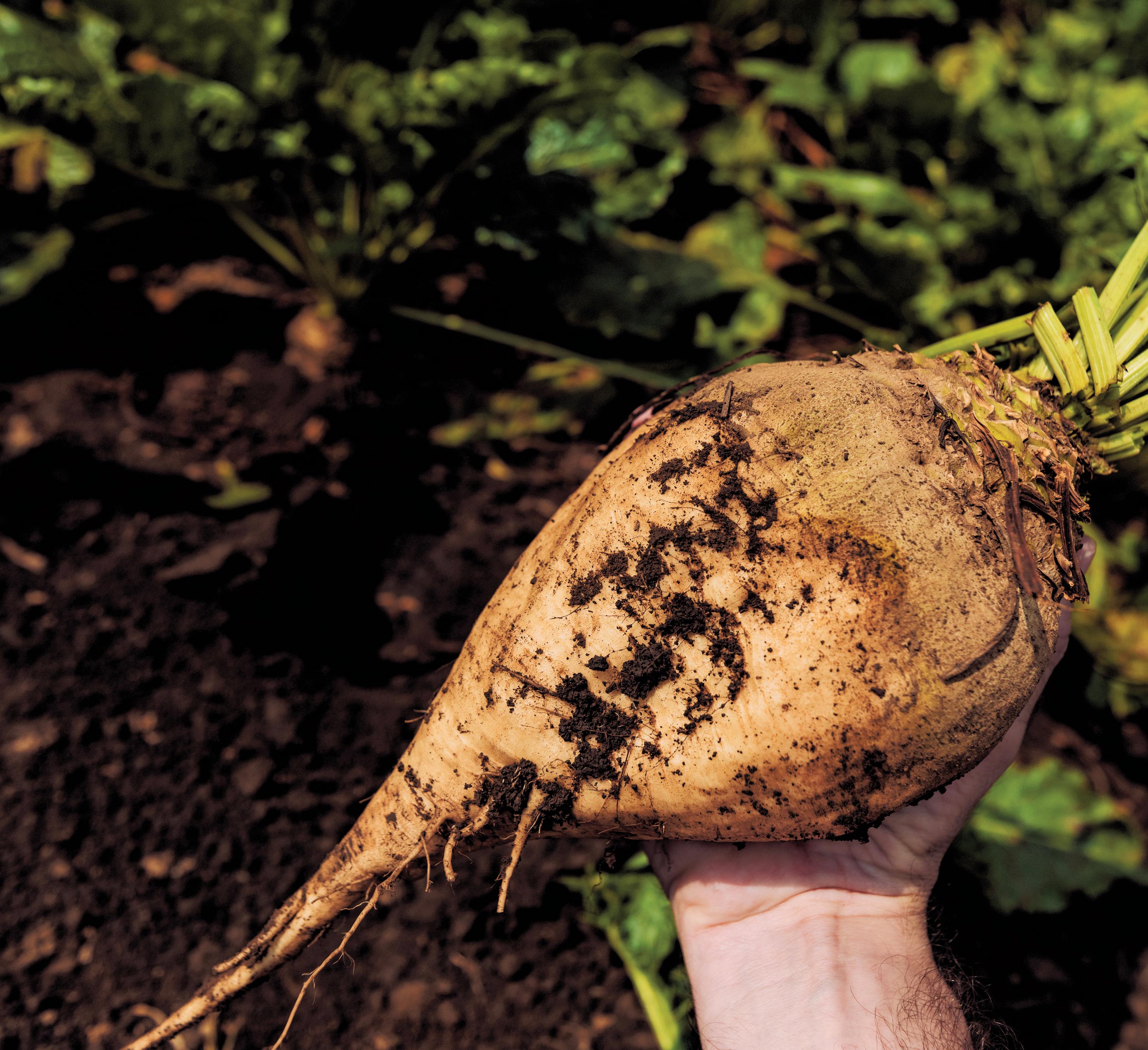


WRITE FIELD
22 NOVEMBER 2021 AGWEEK.COM/SUGARBEET FACEBOOK.COM/SUGARPUB | INSTAGRAM.COM/SUGARPUB | TWITTER.COM/SUGARPUB 23
Dustin Wolf submitted this photo of sunset over a sugarbeet field in Drayton, North Dakota. Dustin Wolf
Driven to be the technical tubing expert for the sugar production industr y– manufacturing quality welded stainless steel specialty tubing products for evaporators, vacuum pans,juice pre-heaters and more
Welded Stainless Tubing Grades mill test reports provided: A249-439, A249-304/304L, and A249-316/316L
#A
Pa ssio nT hatG ro ws|ses va nd er ha ve .c om/US

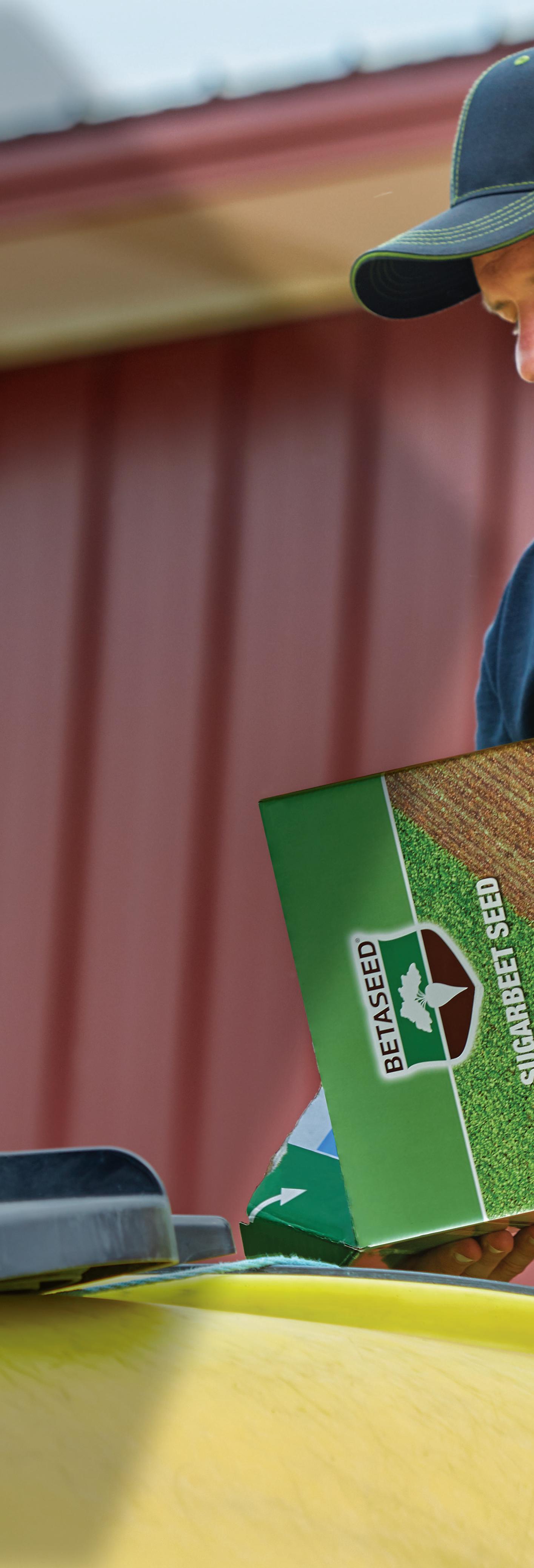





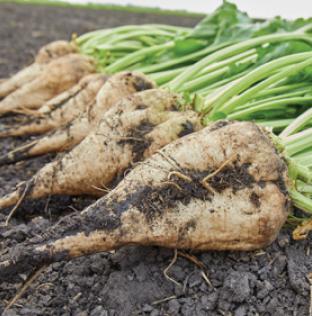

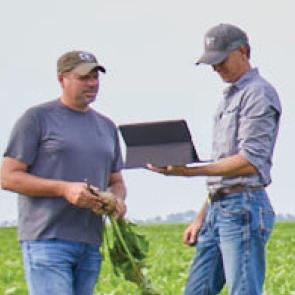


24 NOVEMBER



















 1: Steve Helm takes advantage of some down time in harvest and does some repairs to his lifter. Helm farms near Drayton, North Dakota, and his nephew Dustin Wolf, who drives truck during harvest, submitted this photo.
2: Miles Moxness, 3, was helping his dad, Matt Moxness wait for trucks during the Minn-Dak Farmers Cooperative sugarbeet harvest campaign. Photo taken in Kent, Minnesota. Submitted by Marissa and Matt Moxness.
3: Berklee, 5, and Skotlyn, 10 months, Mathiason sit in a sugarbeet field in Thompson, North Dakota. “Berklee loves all things farming and will ride in the tractor all day long. We hope these girls will take over Mathiason Farms one day,” writes her mother, Kera Mathiason, who submitted the photo.
4: A line of harvest equipment is ready to go at Hong Farms near Buxton, North Dakota, in late September. Submitted by Chad Michael.
1: Steve Helm takes advantage of some down time in harvest and does some repairs to his lifter. Helm farms near Drayton, North Dakota, and his nephew Dustin Wolf, who drives truck during harvest, submitted this photo.
2: Miles Moxness, 3, was helping his dad, Matt Moxness wait for trucks during the Minn-Dak Farmers Cooperative sugarbeet harvest campaign. Photo taken in Kent, Minnesota. Submitted by Marissa and Matt Moxness.
3: Berklee, 5, and Skotlyn, 10 months, Mathiason sit in a sugarbeet field in Thompson, North Dakota. “Berklee loves all things farming and will ride in the tractor all day long. We hope these girls will take over Mathiason Farms one day,” writes her mother, Kera Mathiason, who submitted the photo.
4: A line of harvest equipment is ready to go at Hong Farms near Buxton, North Dakota, in late September. Submitted by Chad Michael.
































































































































































































































 Farms, owned by Erik Bakke and Beau Jacobsen, in Ulen, Minnesota. The tour wrapped up on Sept. 30 with a tour of the American Crystal Moorhead factory.
Farms, owned by Erik Bakke and Beau Jacobsen, in Ulen, Minnesota. The tour wrapped up on Sept. 30 with a tour of the American Crystal Moorhead factory.




 TOP TO BOTTOM: Rosanne Rust talks to Mindy Bakke as a group of dietary influencers experiences sugarbeet harvest in the Red River Valley.
TOP TO BOTTOM: Rosanne Rust talks to Mindy Bakke as a group of dietary influencers experiences sugarbeet harvest in the Red River Valley.





























































 Sustainability, both in the financial sense and the conservation sense, are important aspects of the Mari family’s farming operation, which includes sugarbeets for Western Sugar Cooperative.
Sustainability, both in the financial sense and the conservation sense, are important aspects of the Mari family’s farming operation, which includes sugarbeets for Western Sugar Cooperative.



























